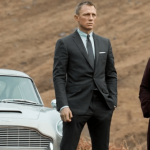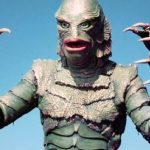 Politics
Politics  Politics
Politics  Weird Stuff
Weird Stuff Ten Bizarre Facts About The Doge Meme
 Our World
Our World 10 Ways Your Christmas Tree Is More Lit Than You Think
 Movies and TV
Movies and TV The 10 Coolest Stars to Set Sail on The Love Boat
 History
History 10 Things You Didn’t Know About the American National Anthem
 Technology
Technology Top 10 Everyday Tech Buzzwords That Hide a Darker Past
 Humans
Humans 10 Everyday Human Behaviors That Are Actually Survival Instincts
 Animals
Animals 10 Animals That Humiliated and Harmed Historical Leaders
 History
History 10 Most Influential Protests in Modern History
 Creepy
Creepy 10 More Representations of Death from Myth, Legend, and Folktale
 Politics
Politics 10 Political Scandals That Sent Crowds Into the Streets
 Weird Stuff
Weird Stuff Ten Bizarre Facts About The Doge Meme
 Our World
Our World 10 Ways Your Christmas Tree Is More Lit Than You Think
Who's Behind Listverse?

Jamie Frater
Head Editor
Jamie founded Listverse due to an insatiable desire to share fascinating, obscure, and bizarre facts. He has been a guest speaker on numerous national radio and television stations and is a five time published author.
More About Us Movies and TV
Movies and TV The 10 Coolest Stars to Set Sail on The Love Boat
 History
History 10 Things You Didn’t Know About the American National Anthem
 Technology
Technology Top 10 Everyday Tech Buzzwords That Hide a Darker Past
 Humans
Humans 10 Everyday Human Behaviors That Are Actually Survival Instincts
 Animals
Animals 10 Animals That Humiliated and Harmed Historical Leaders
 History
History 10 Most Influential Protests in Modern History
 Creepy
Creepy 10 More Representations of Death from Myth, Legend, and Folktale
10 Canceled Franchise Movies Made into Something Else
Franchise building is big business in the film world today, with studios seeking ever-more creative ways to connect fan-favorite characters across as many films as possible. While this has made Marvel the undisputed champion of the big screen for the past decade and a half, things don’t always go as planned. There are perhaps as many planned and canceled sequels, reboots, and spin-offs as there are movies to watch.
However, just because an idea has been nixed by the studio doesn’t mean it can’t come back in some future form. Chopped up, carried over, or reworked with a new cast, many of these planned films, or at least aspects of them, live on for our viewing pleasure. Thus, here are 10 canceled franchise films that were made into something else.
Related: Top 10 Books That Deserve Another Movie Adaptation
10 Escape from Earth (Escape from New York)
Although John Carpenter’s sci-fi prison heist Escape from New York was an ’80s cultural sensation, it took 15 years for the sequel Escape from L.A. to be made. Unfortunately, it was released alongside the likes of the family-friendly Independence Day, and its dark, nihilistic tone didn’t do well.
Escape from Earth, the planned third entry, would have seen the world plunged into a new dark age as protagonist Snake Plissken (Kurt Russell) uses a superweapon to shut down the planet’s power. But Escape from L.A.’s poor critical and commercial performance put the skids on this idea.
Thus, Carpenter made Ghosts of Mars instead, whose setup follows the Escape series’ core template of a rogue element (Ice Cube’s James Williams) aiding an extraction mission—this time from Mars—and which bears more than a passing resemblance to Escape from Earth. While Carpenter has protested claims that Ghosts is just the third Escape movie repurposed for a market that wanted nothing to do with his franchise, the similarities between the projects are too numerous to mention. While not a direct reworking of Escape from Earth, Ghosts of Mars definitely carried across many of the canceled film’s ideas.[1]
9 Monsters, Inc. 2: Lost in Scaradise (Monsters, Inc.)
During the mid-aughts breakdown of the Disney-Pixar partnership, the House of Mouse (who owned the relevant copyright) planned a sequel to the beloved monsters-at-work animation film Monsters, Inc. The follow-up Monsters, Inc. 2: Lost in Scaradise would have seen the first film’s leading duo, Mike and Sully, trapped in the human world while tracking down their child friend Boo and encountering all the monsters we know from our world.
When Bob Iger took over at Disney, however, he rescued their relationship with Pixar and brought the smaller company in-house. This meant many of the sequels Disney had the rights to make without Pixar—including Lost in Scaradise—got scrapped.
While the project was canceled in its prime, Pixar did bring the characters back for the prequel Monsters University. But it was the 2021 show Monsters at Work that actually created new material from the ruins of the planned sequel, carrying over several ideas, including Sully running the company and Mike getting trapped in the human world.[2]
8 The Amazing Spider-Man 3 (Spider-Man)
The Amazing Spider-Man series offered a new Peter Parker for the 2010s, in the form of Andrew Garfield. His first franchise entry got off to an acceptable start. While its sequel wasn’t a massive hit with critics, it made enough at the box office to ensure the franchise’s longevity—or so we thought.
In early 2015, the deal between Sony (rights-holders for Spider-Man on film) and Marvel/Disney allowed Spider-Man to become part of the Marvel Cinematic Universe and initiated a recast for the role, calling time on the existing franchise.
Amazing Spider-Man 3 would have brought back the second film’s writers and director and continued the setup of Peter coming to terms with the death of his girlfriend, Gwen Stacy (Emma Stone), alongside the emergence of supervillain group the Sinister Six. Although we never got to see a fully realized third film, the MCU brought back Garfield for 2021’s No Way Home. This showed us Garfield-Peter’s grief over Gwen’s death, providing a moment of redemption for not saving her, and gave us 5/6ths of a Sinister Six lineup—which is the next best thing.[3]
7 MIB 23 (21 Jump Street/Men in Black)
Directors Phil Lord and Christopher Miller revitalized the late-1980s police procedural 21 Jump Street as a comedy franchise in the 2010s, with Jonah Hill and Channing Tatum in the lead roles. At the same time, Men in Black 3 brought back the presumed-dead sci-fi franchise with a time-traveling entry to the canon that felt reverential of previous films and fresh enough for a new audience.
Recognizing the promise of both franchises, Sony Pictures executives planned a crossover Jump Street and Men in Black film MIB 23. It would have ditched MIB franchise regulars Tommy Lee Jones and Will Smith, replacing them with Hill and Tatum for something a little sillier and more light-hearted.
Though the idea gained traction with fans, the sequel languished in development for years. Eventually, Sony took on the proposal of new blood and a more comedy-focused direction with Men in Black: International. They drafted in Chris Hemsworth and Tessa Thompson, hoping to capture some of the effortless banter, comedy, and chemistry the pair shared on Thor: Ragnarok, but it never lived up to expectations. [4]
6 Kick-Ass 3 (Kick-Ass)
During the initial comic book movie boom, Matthew Vaughn treated us to an R-rated look at the world of amateur superheroes by adapting Mark Millar’s Kick-Ass. The film introduced us to the darker side of heroics, made a decent innings at the box office, and turned Aaron Taylor-Johnson (Kick-Ass), Chloe Grace-Moretz (Hit-Girl) and Christopher Mintz-Plasse (Red Mist) into stars.
Unfortunately, Kick-Ass 2 did worse than expected at the box office and turned critics, fans, and the cast off future installments. The canceled third film would have picked up the story of Millar’s graphic novel Kick-Ass 3, which has Kick-Ass leading his own superhero team, Hit-Girl in jail, and a broken Red Mist learning from a new supervillain.
Vaughn has since confirmed he will be rebooting the franchise soon, and getting some new blood in that can speak to the current moment. However, that doesn’t mean the plans for the original sequel will go to waste, as he is still adapting from the same material, instructing fans to “look what Mark Millar is doing with the comic for clues” about what’s coming next.[5]
5 X-Men Origins: Magneto (X-Men)
Thanks to the success of the original X-Men films, 20th Century Fox conceived of a follow-up series focusing on specific characters. X-Men Origins: Wolverine was the first out the gate in 2009, and the studio green-lit several others, including X-Men Origins: Magneto, whose script had been gestating for years.
Following Ian McKellen’s original trilogy mutant, Erik Lehnsherr, the film would tell the story of his transformation into Magneto. Writer Sheldon Turner pitched his script as The Pianist meets X-Men, with events spanning from Lehnsherr’s Holocaust childhood through to his present-day super-villainy. Dark Knight trilogy/Snyderverse co-writer David S. Goyer was onboard to adapt Turner’s script and direct. McKellen would have reprised his role in the present-day segments.
However, after Wolverine failed to do the kind of numbers at the box office that the studio expected, Bryan Singer, director of the first two X-Men films, was brought onboard to reboot the franchise. Magneto was ditched, and in its place came First Class, an origin story of sorts for several of the X-Men. The film includes various aspects of the Magneto story, including his years in a Nazi camp, despite Singer denying having used Turner’s story. The Writers Guild of America, however, disagreed and awarded Turner co-writing credit.[6]
4 The Silver Surfer (Fantastic Four)
The Fantastic Four has been one Marvel property that no studio or director has been able to get right. Despite three major big-screen versions of the iconic team, none have stuck with audiences, and all have either bombed or only made modest returns at the box office.
Nevertheless, 20th Century Fox recognized the wider appeal of the Silver Surfer, who appeared in 2007’s Fantastic Four: Rise of the Silver Surfer, and hired Babylon 5 creator J. Michael Straczynski to pen a script. Straczynski’s Silver Surfer movie would have picked up where Fantastic Four left off, going deep into the mysterious character’s backstory, embracing his intergalactic side, and his relationship with planet-consuming cosmic entity Galactus.
However, after the underperformance of Rise, the two elements of the Fantastic Four and Silver Surfer worlds got split. The former was canceled and eventually rebooted in 2015’s disastrous “gritty” overhaul, and Straczynski completed the comic book series Silver Surfer: Requiem. But with Marvel Studios now working on another F4 film, rumors abound about the possibility of the Surfer making his big-screen return.[7]
3 Boba Fett (Star Wars)
Since his first on-screen appearance in the second/fifth Star Wars film The Empire Strikes Back, interplanetary bounty hunter Boba Fett has been a fan favorite. In the years following his apparent demise in Return of the Jedi, the very same fans have been clamoring for more.
And more they almost got, in the form of a standalone film directed by Indiana Jones and the Dial of Destiny’s James Mangold. Mangold’s vision for the film was to portray Fett as a gunslinging outlaw in the Spaghetti Western tradition, and he would have been shooting for an R rating—definitely not the norm for the typically PG-13 series.
Unfortunately, the first of the deep-dive character movies from the now Disney-owned Lucasfilm, Solo: A Star Wars Story, performed poorly at the box office, and all related projects were put on ice. Nevertheless, streaming series The Book of Boba Fett eventually replaced the potential film, taking a lighter approach than Mangold had written but still offering plenty of backstory, a Western tone, and a new life for the character that assured fans of his longevity.[8]
2 Tron: Ascension (Tron)
Joseph Kosinski’s Tron: Legacy brought the presumed-dead sci-fi series back to life, turning a cult classic into a franchise. After moderate commercial success (making back over two times its production budget at the box office), a sequel—Tron: Ascension—was in the cards. By 2015, Kosinski had the whole thing storyboarded and ready to go, with the idea of bringing digital and real worlds together, blurring the lines of reality. But Disney pulled the plug.
According to Legacy star Garrett Hedlund, who was on board to star in Ascension, it was the failure of the George Clooney vehicle Tomorrowland that caused the studio to call off the sequel—although Kosinski reckoned they were just hedging their bets by putting resources into other, more bankable franchises instead.
Nonetheless, Ascension became Tron: Ares, a new project built out of the ideas of the Ascension script. Jared Leto is starring, playing a character called Ares, who was supposed to be a key player in the original treatment. And with production currently underway, fans won’t have too long to see for themselves.[9]
1 Invisible Man (Universal’s Dark Universe)
Originally touted to star Johnny Depp, the latest adaptation of H.G. Wells’s Invisible Man underwent a major overhaul after Universal’s own attempt at universe-building came crashing to its knees on the first film.
The so-called Dark Universe would have drawn together Universal’s classic monsters, including Frankenstein, the Mummy, Dr. Jekyll and Mr. Hyde, Dracula, and, of course, the Invisible Man for the first shared film franchise of its kind. But the initial film of the series—2017’s The Mummy, with a thoroughly miscast Tom Cruise as the lead—was a critical failure.
As such, the planned Invisible Man movie was reworked by director Leigh Whannell and producer Jason Blum, with a fraction of the resources (only $7 million), none of Depp’s blockbuster star power, and a firmer grasp on reality. Starring Elizabeth Moss, the movie became the far smaller and more intimate The Invisible Man. It succeeded in not only telling a nuanced story about domestic abuse but also making back around twenty times its budget.[10]








